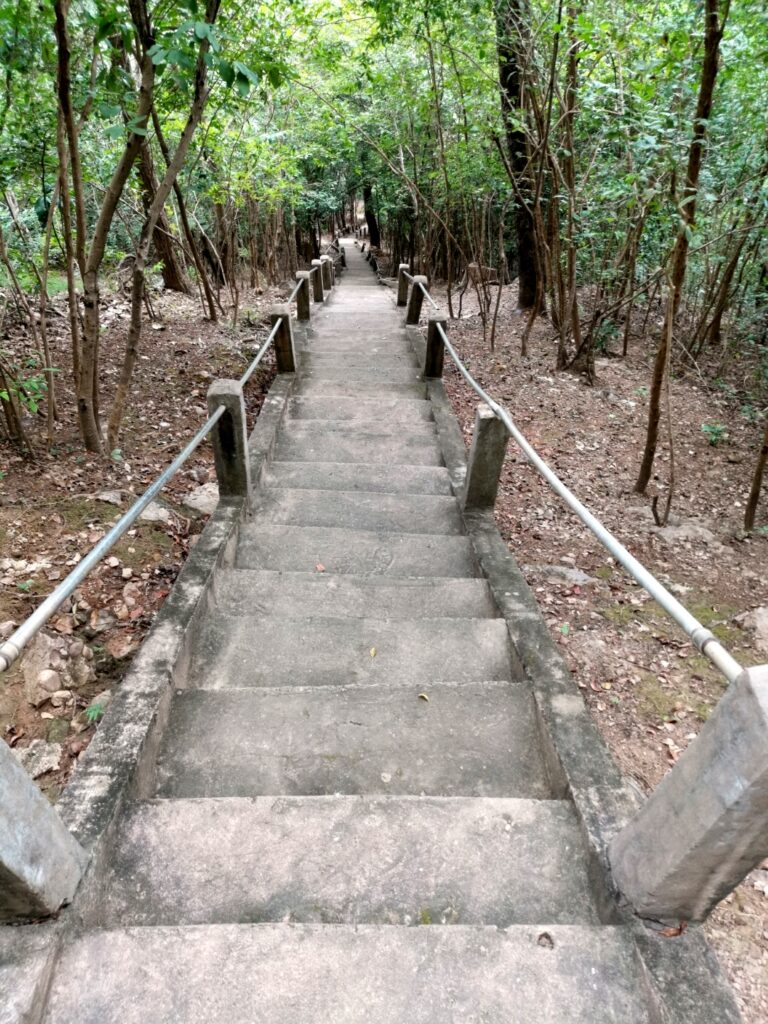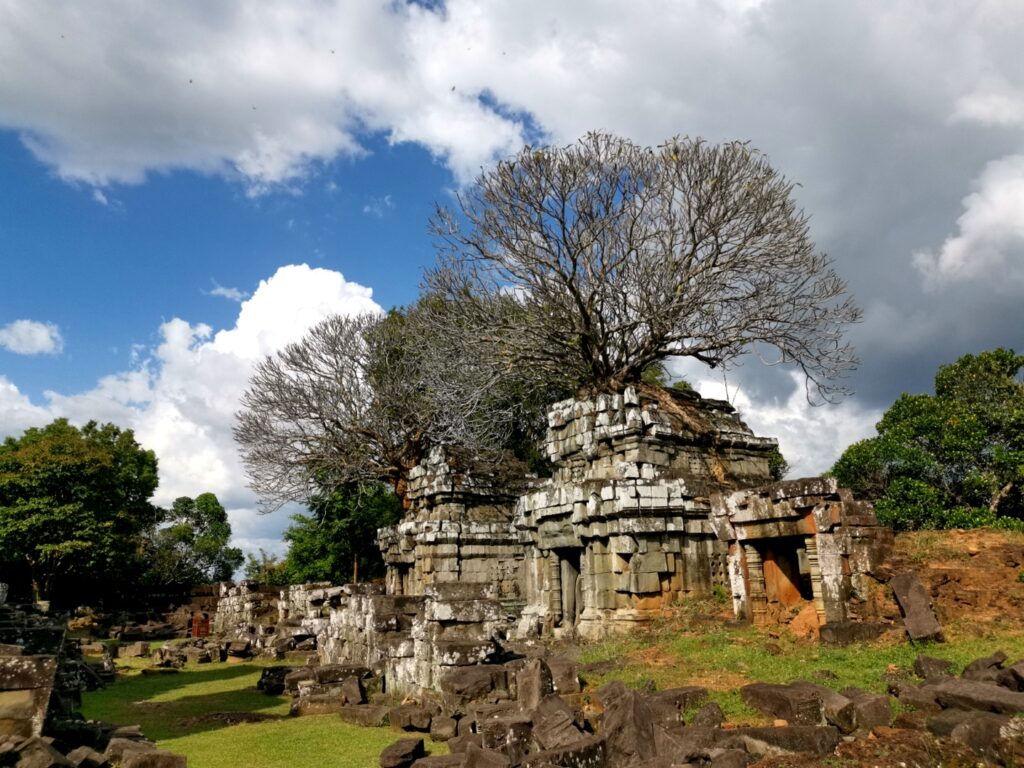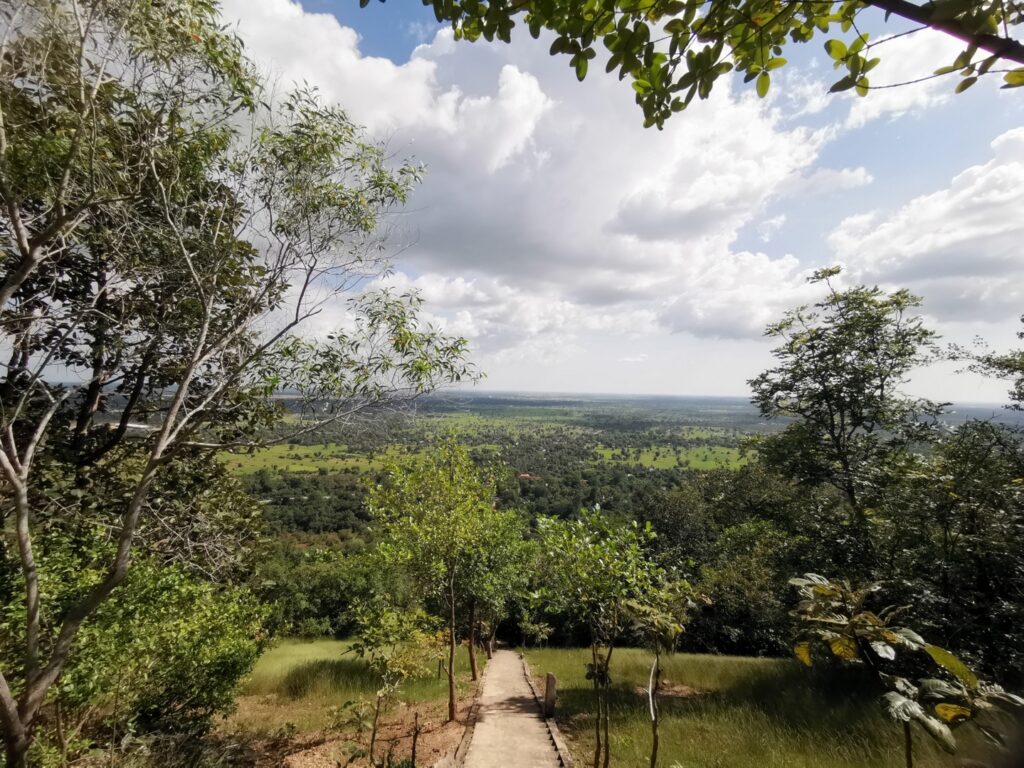Phnom Bok – the highest temple in Siem Reap
Phnom Bok is a temple built on the hill of the same name (located northeast of the Eastern Baray). The complex was commissioned during the reign of King Yasovarman I and is part of the “Trilogy of Mountains”, in which three very similar structures were built on three hills by the same ruler. All this was planned and implemented in the 9th and 10th centuries: The other two temples are Phnom Bakheng and Phnom Krom. For visitors, it is recommended to travel from Siem Reap, which is only about 25 kilometers away, as many guided tours to the region are offered here. Alternatively, it can also be recommended to hire a tuk tuk for this purpose.

Stairs to the ascent

Temple ruins on top of Phnom Bok
King Yasovarman I deemed the hill of Phnom Bok too high and impractical to use as the center of a new capital. For this reason, Phnom Bakheng also became his state temple. Phnom Bok is 221 meters high and can be climbed by visitors via 635 steps (which are still well preserved and accessible to tourists). The not entirely unstrenuous climb is usually worthwhile for visitors, however, as a great view can be enjoyed from the top of the hill (for example, of the surrounding rice fields and Lake Tonle Sap, but also a quasi all-round view of Angkor Wat). The temple itself is dedicated to the deities Brahma, Vishnu and Shiva, who together are called “Trimurti” in Hinduism. There are also the corresponding images of the deities in the temple, although it is not so much the artwork and inscriptions of the temple that attract visitors today, but rather the uniqueness of the location.

View from Phnom Bok
The complex was built largely of sandstone, with laterite stone used only for the paths, walls and viewing platforms. Until today the temple is in a very good condition, only the temple towers are clearly decayed and on top of them two big trees are enthroned.
Phnom Bok is a UNESCO World Heritage Site. Nevertheless, the site is less often visited than the comparable, surrounding temple complexes. With a bit of luck and good timing (in the best case after consultation with a local tour guide), the temple can be explored in peace and with few other visitors at the same time – which is a rarity, especially with the Angkor buildings. For the excursion you should plan about two hours to be able to linger a little after the somewhat longer climb to the top and to explore the individual niches of the temple closer.